1Where did your interest in upcycling start?
I grew up in a creative home and my dad would always be designing, making and fixing things. For as long as I can remember I’ve had a curiosity about how things are made, what they are made from and why. I love design, creativity and making things. And so, those interests, mixed with being practical and resourceful, meant that even from a young age I would gravitate towards creating things from materials I already had or found. It just made sense to me to use what I had or what needed using.
2 Why did you set up The Upcycle Movement?
I began The Upcycle Movement as a passion project back in 2012.
I was hugely inspired by a bag my brother gifted me, which was made from Tsunami relief rescue tents. It was made by women who had lost everything in the Tsunami (in 2004) and had been sheltering in these tents. When it was time for them to move on, they cleverly turned the tents into bags to sell and make money to help them on their next step to rebuild their lives. It made me think about how much sense that makes on so many levels – socially, economically and environmentally.
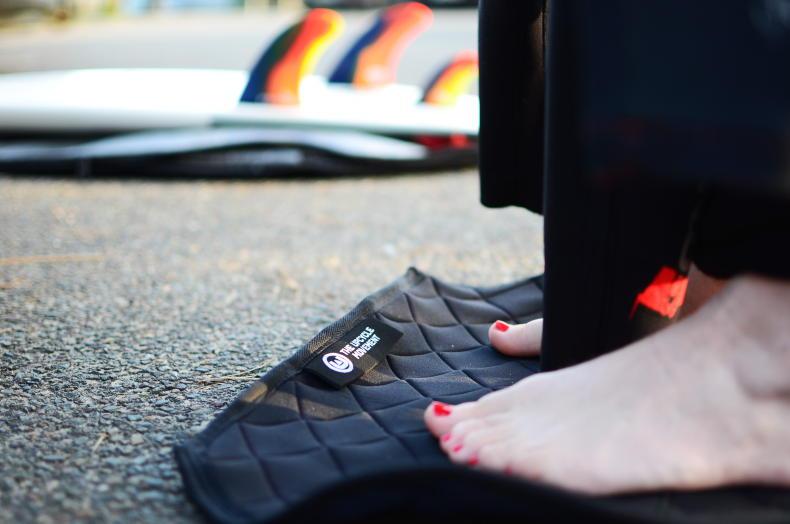
Neo game changer changing mat €36.
I began to realise there are so many people around the world upcycling materials in really clever ways and so I wanted to create a platform to highlight and connect the movement that was happening to hopefully inspire more of it. It initially started off as a blog and has evolved from there.
3 Can you tell me about your own fashion range, Neo?
I lived at a lake activity centre and it was here that I became aware of the issue with disposing of wetsuits. Once they are damaged beyond repair and no longer functional as a wetsuit, there had been no other solution than to be land filled or shredded. This costs money to do and not to mention the environmental costs.
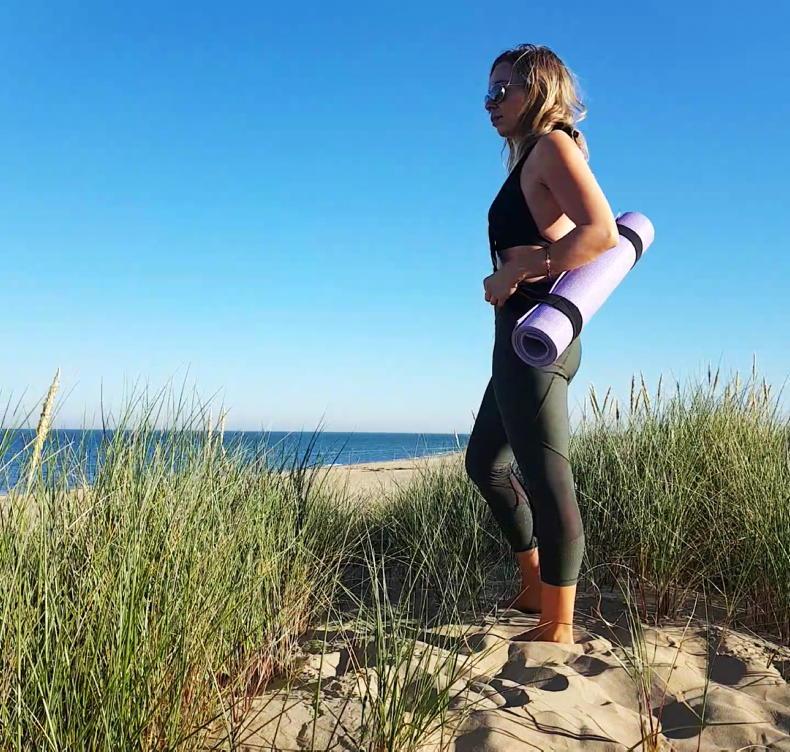
Neo warrior mat strap €24.
Wetsuits are made from neoprene, which is a synthetic rubber derived from petroleum. To make a wetsuit is harmful to the environment and so to think of them ultimately ending up in landfill, only to further harm the environment, just didn’t sit right with me. Especially as the material itself has such great qualities and can lend itself to many other things. And so I set about experimenting with it and designing a product range to elongate the lifespan and value of the material. Some of the products include a yoga mat strap, bags, travel pouches, laptop covers. One of the best sellers has been the Neo game changer – a mat to stand on for changing post-swim or adventure. It is double layered and the underside is made from rescued tent groundsheet.
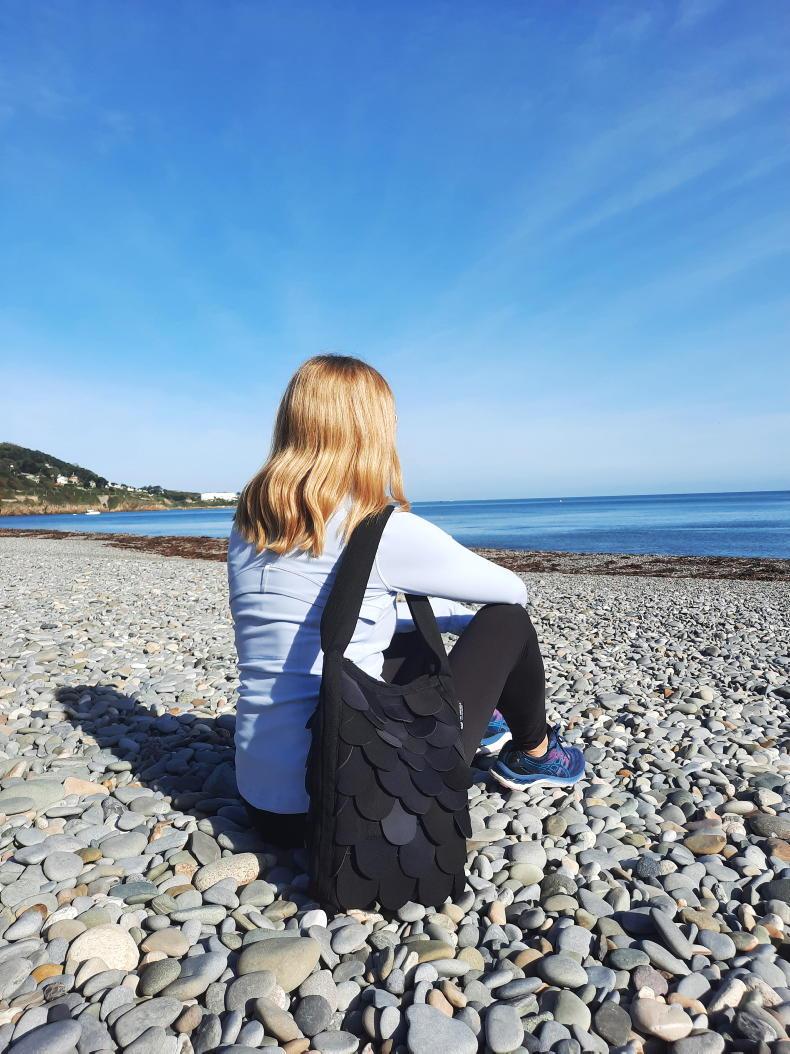
Neo mermaid bag €95.
4 What are the other main roles of The Upcycle Movement?
The Upcycle Movement website offers an online shop and hub for upcyclers to showcase and sell their designs. It also is home to “Re Source” – a platform with the aim of sourcing waste streams (resources) and connecting these with designers who can repurpose them.
I also facilitate educational and skill-sharing workshops in schools and universities, which focus on upcycling, circular design and finding business opportunities in locally sourced waste materials.
5 With social media influencers impacting on how people shop, what do you think people should know about fast fashion?
More often than not, online returns
are land-filled rather than resold. So
in the age of the influencer, [the practice] of social media hauls is becoming a very wasteful issue. Over 100 billion items of new clothing are produced each year.
73% of used clothing ends up in landfill or incinerated, of which about 80% could be salvaged and repurposed but currently it is not.
Only less than 1% of material used to produce clothing is recycled into new clothing.
One of the most shocking and upsetting things I’ve learnt about fast fashion production is the unfair treatment and conditions the workers are in. For example, it is common for garment workers to wear nappies during their shift because they are denied toilet breaks. That is just horrific and totally unacceptable. Knowing this, combined with the fact that some items these fellow humans make while in such conditions are only worn once, or worse, aren’t even worn at all, is so unfair and disrespectful and wasteful. It is heartbreaking. And I think once you know this, it is impossible to want anything other than to help change the system. And we, as consumers, are a crucial part of that change.
6 How can people be more sustainable in their shopping, when money might be tight?
Shopping sustainably can actually be kinder to your wallet too! For example, all the amazing charity shops we have around the country. I love finding something a bit different and it is always much cheaper than buying new. Plus you support a charity with your purchase!
Thriftify is a great Irish business, which has brought charity shops online and is definitely worth checking out.
If you are looking for an outfit for an event, there are many options for swapping or rental these days such as Happy Days. This is a wonderful and affordable service as it means you can wear something designer that would be very expensive to purchase otherwise and most likely you’d only wear the once anyway.
Depop is a great app if you are looking for something in particular and want to buy or sell preloved clothing or accessories.
7 Can you share some practical upcycling tips for people to try at home?
There are so many excellent upcycling tutorials online, which make it easy to follow and rework your own clothes to create a whole new look. For example, a simple Google of “upcycle jeans” will bring up everything from embellishing them using Sashiko stitches to transforming your jeans into cushions! It’s a great, accessible way to learn and experiment and you can stop/start the videos at your own pace.
See if there is a sewing or fashion upcycling course in your local area. Once you know the basics of sewing, there’s really no stopping you! And a world of possibility is in your hands.
Lynn Haughton is the founder of The Upcycle Movement. A textile waste artist and re-designer based in Wexford, she works with redundant materials to create sculptures, art and installations, as well as her own product range: the Neo Collection of bags and accessories. Visit
theupcyclemovement.com
1Where did your interest in upcycling start?
I grew up in a creative home and my dad would always be designing, making and fixing things. For as long as I can remember I’ve had a curiosity about how things are made, what they are made from and why. I love design, creativity and making things. And so, those interests, mixed with being practical and resourceful, meant that even from a young age I would gravitate towards creating things from materials I already had or found. It just made sense to me to use what I had or what needed using.
2 Why did you set up The Upcycle Movement?
I began The Upcycle Movement as a passion project back in 2012.
I was hugely inspired by a bag my brother gifted me, which was made from Tsunami relief rescue tents. It was made by women who had lost everything in the Tsunami (in 2004) and had been sheltering in these tents. When it was time for them to move on, they cleverly turned the tents into bags to sell and make money to help them on their next step to rebuild their lives. It made me think about how much sense that makes on so many levels – socially, economically and environmentally.

Neo game changer changing mat €36.
I began to realise there are so many people around the world upcycling materials in really clever ways and so I wanted to create a platform to highlight and connect the movement that was happening to hopefully inspire more of it. It initially started off as a blog and has evolved from there.
3 Can you tell me about your own fashion range, Neo?
I lived at a lake activity centre and it was here that I became aware of the issue with disposing of wetsuits. Once they are damaged beyond repair and no longer functional as a wetsuit, there had been no other solution than to be land filled or shredded. This costs money to do and not to mention the environmental costs.

Neo warrior mat strap €24.
Wetsuits are made from neoprene, which is a synthetic rubber derived from petroleum. To make a wetsuit is harmful to the environment and so to think of them ultimately ending up in landfill, only to further harm the environment, just didn’t sit right with me. Especially as the material itself has such great qualities and can lend itself to many other things. And so I set about experimenting with it and designing a product range to elongate the lifespan and value of the material. Some of the products include a yoga mat strap, bags, travel pouches, laptop covers. One of the best sellers has been the Neo game changer – a mat to stand on for changing post-swim or adventure. It is double layered and the underside is made from rescued tent groundsheet.

Neo mermaid bag €95.
4 What are the other main roles of The Upcycle Movement?
The Upcycle Movement website offers an online shop and hub for upcyclers to showcase and sell their designs. It also is home to “Re Source” – a platform with the aim of sourcing waste streams (resources) and connecting these with designers who can repurpose them.
I also facilitate educational and skill-sharing workshops in schools and universities, which focus on upcycling, circular design and finding business opportunities in locally sourced waste materials.
5 With social media influencers impacting on how people shop, what do you think people should know about fast fashion?
More often than not, online returns
are land-filled rather than resold. So
in the age of the influencer, [the practice] of social media hauls is becoming a very wasteful issue. Over 100 billion items of new clothing are produced each year.
73% of used clothing ends up in landfill or incinerated, of which about 80% could be salvaged and repurposed but currently it is not.
Only less than 1% of material used to produce clothing is recycled into new clothing.
One of the most shocking and upsetting things I’ve learnt about fast fashion production is the unfair treatment and conditions the workers are in. For example, it is common for garment workers to wear nappies during their shift because they are denied toilet breaks. That is just horrific and totally unacceptable. Knowing this, combined with the fact that some items these fellow humans make while in such conditions are only worn once, or worse, aren’t even worn at all, is so unfair and disrespectful and wasteful. It is heartbreaking. And I think once you know this, it is impossible to want anything other than to help change the system. And we, as consumers, are a crucial part of that change.
6 How can people be more sustainable in their shopping, when money might be tight?
Shopping sustainably can actually be kinder to your wallet too! For example, all the amazing charity shops we have around the country. I love finding something a bit different and it is always much cheaper than buying new. Plus you support a charity with your purchase!
Thriftify is a great Irish business, which has brought charity shops online and is definitely worth checking out.
If you are looking for an outfit for an event, there are many options for swapping or rental these days such as Happy Days. This is a wonderful and affordable service as it means you can wear something designer that would be very expensive to purchase otherwise and most likely you’d only wear the once anyway.
Depop is a great app if you are looking for something in particular and want to buy or sell preloved clothing or accessories.
7 Can you share some practical upcycling tips for people to try at home?
There are so many excellent upcycling tutorials online, which make it easy to follow and rework your own clothes to create a whole new look. For example, a simple Google of “upcycle jeans” will bring up everything from embellishing them using Sashiko stitches to transforming your jeans into cushions! It’s a great, accessible way to learn and experiment and you can stop/start the videos at your own pace.
See if there is a sewing or fashion upcycling course in your local area. Once you know the basics of sewing, there’s really no stopping you! And a world of possibility is in your hands.
Lynn Haughton is the founder of The Upcycle Movement. A textile waste artist and re-designer based in Wexford, she works with redundant materials to create sculptures, art and installations, as well as her own product range: the Neo Collection of bags and accessories. Visit
theupcyclemovement.com







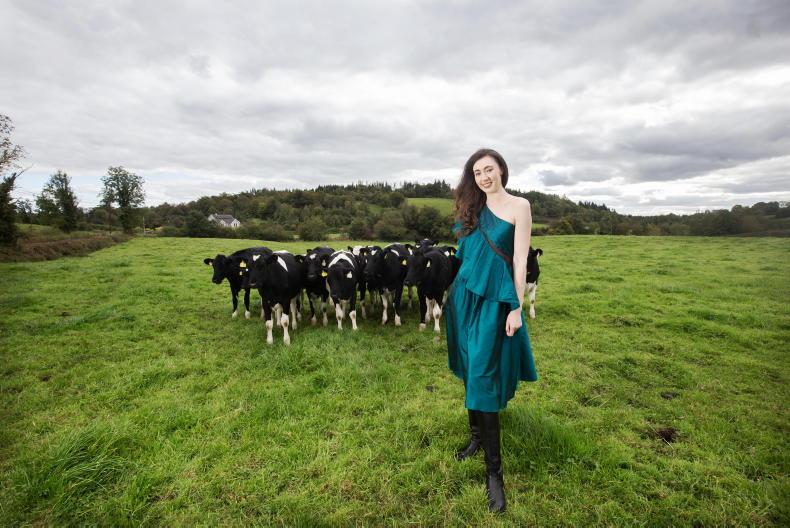
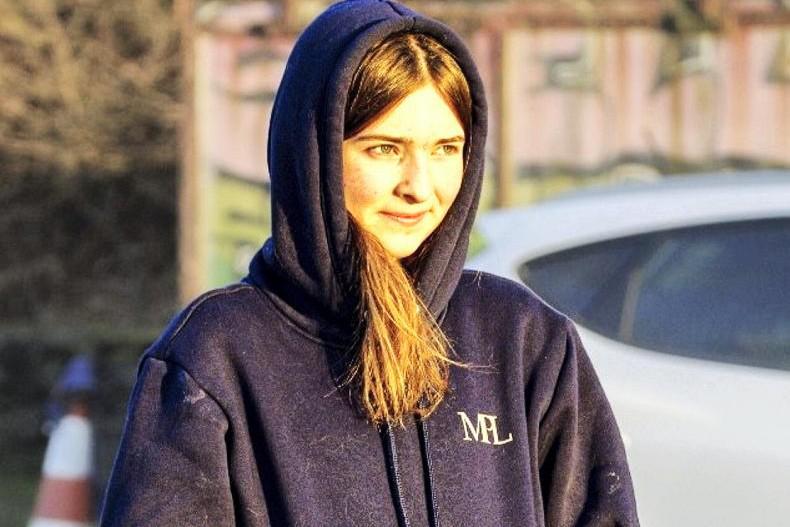


SHARING OPTIONS